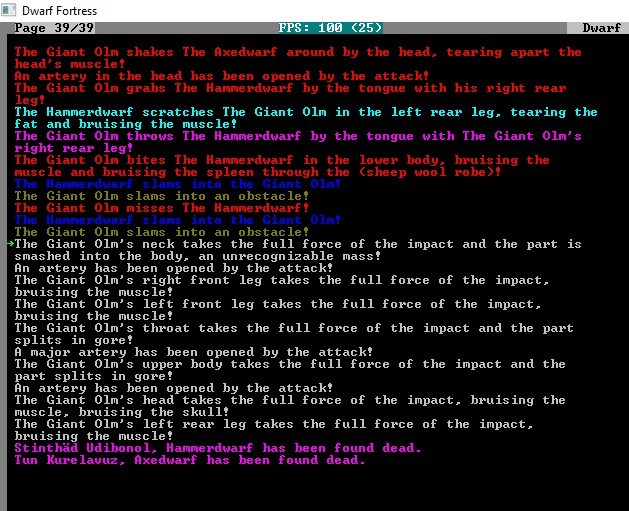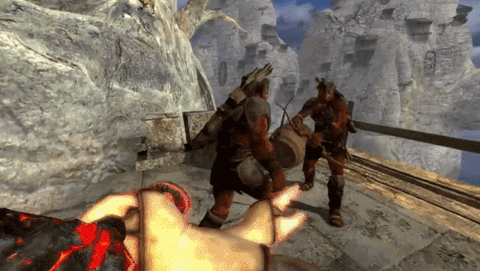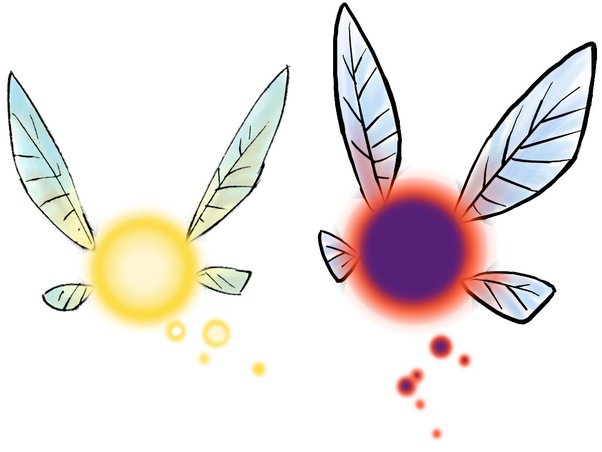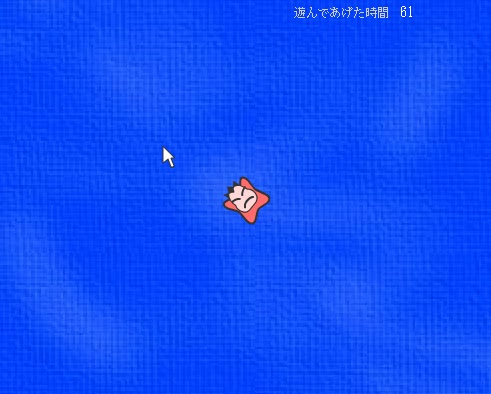


Status: In Progress. Many of the core combat / physics systems are in, but were only in ASCII on a debug console output due to the complexity of what each 'piece' could really be (just like Trick of the Light was before the thesis). It has recently been ported to Unity, changing everything in the codebase from C++ to C#, and graphical updates are being made to make it understandable / playtestable.
A public version of the project is available here at github if you're looking for code samples. I'll post the Unity version as soon as its in a playable state, but the given sample is basically a debug version that requires a specific version of MinGW + GDC that most people probably won't have on them, and thus won't be able to run themselves. Check it out (and its more in-depth README) if you're interested.
A public version of the project is available here at github if you're looking for code samples. I'll post the Unity version as soon as its in a playable state, but the given sample is basically a debug version that requires a specific version of MinGW + GDC that most people probably won't have on them, and thus won't be able to run themselves. Check it out (and its more in-depth README) if you're interested.
Fairy Tales - Fight and flight
Fairy Tales is an adventure bullet-heaven/hell-like game based around the player only using their mouse to control a fairy as they go on quests, and the interesting scenarios one can create with your only form of interaction being movement. Each level is unique, with most involving the fairy automatically using a tool or weapon that necessitates you moving them into an optimal distance / path to damage the enemy as you avoid their attacks in the process, but also includes puzzles and gimmicks. The initial concept was derived from playing the popular game Vampire Survivors too well, where at high levels it was optimal to just stay still and let the enemies run into your bullets while I had nothing to do but move my mouse around pretending to dodge around in the same way you might imagine a man running fast and dodging streetsigns and such as you stare out the window in a long car ride.


Status: In Progress. The gimmickal nature of the levels means every one necessitates new functionality, though they each have a small enough scope that a good idea can be fleshed out easily enough. I tested a trigger-based flow-programming technique here that I rather enjoyed, making nearly all the individual parts of functionality able to be separated and reused at will but admittedly making the bullet-hell patterns more tedious to set up.
A simple walkaround adventure game, "Desert Quest", was my first real experience with the Unreal engine and its blackboard / blueprints systems. It was graded on a simple checklist of getting in things like a 5+ state behaviour tree and A* working using a mixture of blueprints / C++, but it was enjoyable to learn and play around with, especially the eye-catching lighting systems. It's 3GB due to the team's artists overloading it with 'essential' art assets, but if you're truely desperate for a solid adventure platformer and have an unlimited data plan, have at it.
"The Dungeon of Schmöprl", a project in Unity 3D for the Vive, aimed at bridging the gap between player and observer. Given free reign to design anything interesting as a new experience for VR, we noticed it was enjoyable as onlookers to observe what a VR player was doing on the nearby computer monitor and give advice and had the idea to make a two player co-op game. In the game, the VR player interacts with the world but has limited vision for large environmental puzzles and is dependant on the nearby computer player acting as a scout with an overhead view of the map telling them where to go next. The trailer to the left (1:30) gives an example of gameplay and this powerpoint presentation has bulleted notes on the inner workings of the game (that we expanded on in person during presentation. I'd be happy to give the same speech in detail if you want to know more).
Real-time tile-based engine "Divine Harvest" project planned to be a mix between a godlike anthill simulator and an SCP-handling adventure. Generic survival-sim behaviour for the most part, but randomized or pregenerated divine people / items / beasts are attracted to your base over time, leaving the player to figure out their behaviour and manipulate them to your advantage. Think Rimworld + Lobotomy Corp + SPC Containment. Currently just a bare bones engine with SDL graphics.
Real-time top-down-shooter engine "Space-Time" with generic point-and-shoot action similar to old flash games. Just playing around with raycasting and flocking algorithms, but I got plenty of expereince with that between class projects and making Trick of the Light and lost interest. Currently very bare bones and 3/4-converted from being the "sideways-facing-camera-with-gravity" kind of 2D to the "Top-down overhead" kind of shooter.
Others - Bits and pieces, dime a dozen
Plenty of other small projects that ended up abandoned halfway or finished and forgotten. Many academic projects fall into that category, mostly Unity or Unreal engine creations that were worked on as a team similar to the Perlenspiel projects above. The Perlenspiel games are my best example of "popcorn" works you can just pick up and play, I've always much prefered working on megaprojects that would take a manual to understand.A simple walkaround adventure game, "Desert Quest", was my first real experience with the Unreal engine and its blackboard / blueprints systems. It was graded on a simple checklist of getting in things like a 5+ state behaviour tree and A* working using a mixture of blueprints / C++, but it was enjoyable to learn and play around with, especially the eye-catching lighting systems. It's 3GB due to the team's artists overloading it with 'essential' art assets, but if you're truely desperate for a solid adventure platformer and have an unlimited data plan, have at it.
"The Dungeon of Schmöprl", a project in Unity 3D for the Vive, aimed at bridging the gap between player and observer. Given free reign to design anything interesting as a new experience for VR, we noticed it was enjoyable as onlookers to observe what a VR player was doing on the nearby computer monitor and give advice and had the idea to make a two player co-op game. In the game, the VR player interacts with the world but has limited vision for large environmental puzzles and is dependant on the nearby computer player acting as a scout with an overhead view of the map telling them where to go next. The trailer to the left (1:30) gives an example of gameplay and this powerpoint presentation has bulleted notes on the inner workings of the game (that we expanded on in person during presentation. I'd be happy to give the same speech in detail if you want to know more).
Real-time tile-based engine "Divine Harvest" project planned to be a mix between a godlike anthill simulator and an SCP-handling adventure. Generic survival-sim behaviour for the most part, but randomized or pregenerated divine people / items / beasts are attracted to your base over time, leaving the player to figure out their behaviour and manipulate them to your advantage. Think Rimworld + Lobotomy Corp + SPC Containment. Currently just a bare bones engine with SDL graphics.
Real-time top-down-shooter engine "Space-Time" with generic point-and-shoot action similar to old flash games. Just playing around with raycasting and flocking algorithms, but I got plenty of expereince with that between class projects and making Trick of the Light and lost interest. Currently very bare bones and 3/4-converted from being the "sideways-facing-camera-with-gravity" kind of 2D to the "Top-down overhead" kind of shooter.